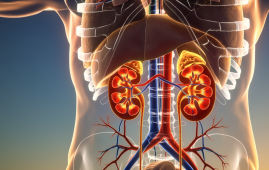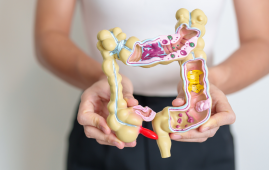

This Pneumonia study looked at how chest X-ray data affect antibiotic starting by general practitioners in France when treating patients with probable pneumonia.
Method of study
A prospective cross-sectional investigation was carried out on adult patients with probable pneumonia who underwent chest X-rays as part of their examination. To investigate factors related with antibiotic initiation, patients’ characteristics were compared at inclusion and at 28 days between those with positive chest X-rays (indicating pneumonia) and those with negative chest X-rays.
Main results
The sample comprised 259 adult patients. The median age was 58 years; 120 (46.3%) were men; 249 (96.1%) had not received antibiotics previous to inclusion; and 69 (26.7%) had at least one risk factor for pneumococcal illness.
- The majority of the general practitioners who treated patients were women (55.2%; n = 153), with a median age of 39 years. 76.1% (n = 210) were general practitioner trainers.
- 55.6% of patients (144 out of 259) obtained positive chest X-rays.
- Patients with positive chest X-ray results had greater body temperature, quicker heart rate, faster breathing rate, more trouble breathing, and more frequent unilateral chest discomfort than patients with negative X-ray results, and their symptoms persisted for longer periods of time.
- Antibiotics were prescribed to 99.3% of patients who had positive chest X-ray results. Despite having less symptoms and negative chest X-ray results, 79 out of 115 patients (68.75%) were prescribed antibiotics.
Why does it matter?
This study found that many general practitioners administer antibiotics for suspected community-acquired pneumonia even when chest X-ray results are negative, revealing a gap between guidelines and actual practice.
more recommended stories
 36-Week Pre-eclampsia Screening May Reduce Term Risk
36-Week Pre-eclampsia Screening May Reduce Term RiskA New Preventive Strategy for Term.
 Cardiovascular Risk and Sudden Cardiac Death in Diabetes
Cardiovascular Risk and Sudden Cardiac Death in DiabetesRising Sudden Cardiac Death (SCD) Risk.
 Poor Kidney Function and Alzheimer’s Biomarkers Explained
Poor Kidney Function and Alzheimer’s Biomarkers ExplainedPoor kidney function may influence levels.
 Perinatal Mental Health Challenges Highlighted in New Study
Perinatal Mental Health Challenges Highlighted in New StudyMental Health Challenges in New Parents:.
 Walking Speed Before Hip Replacement Predicts Recovery
Walking Speed Before Hip Replacement Predicts RecoveryNew Evidence Points to a Simple,.
 Neuroblastoma Drug Combo Extends Survival in Models
Neuroblastoma Drug Combo Extends Survival in ModelsA Promising Shift in High-Risk Neuroblastoma.
 How Soybean Oil Impacts Weight Gain and Metabolism
How Soybean Oil Impacts Weight Gain and MetabolismWhy Soybean Oil May Affect Metabolism.
 Coffee and Cognitive Function: Evidence Review
Coffee and Cognitive Function: Evidence ReviewA new narrative review in Cureus.
 World Summit Outlines Core Principles for Healthy Longevity
World Summit Outlines Core Principles for Healthy LongevityWhy Healthy Longevity Demands a New.
 Colorectal Cancer Screening Rates Low in Adults 45–49
Colorectal Cancer Screening Rates Low in Adults 45–49Recent UCLA research reveals that colorectal.

Leave a Comment